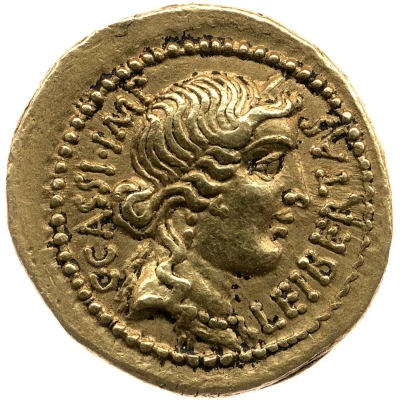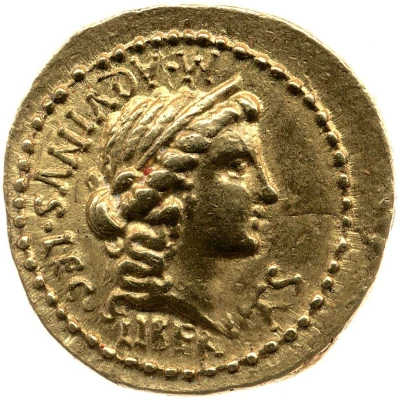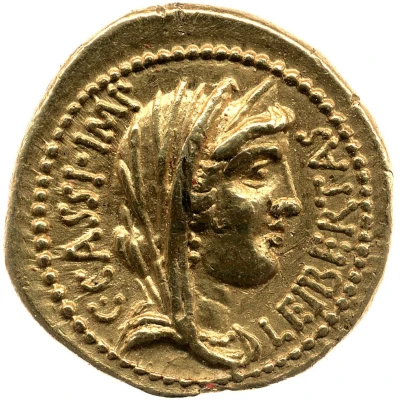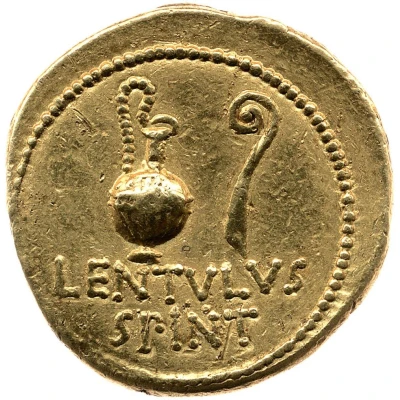


© Trustees of the British Museum
Aureus - Cassius LEIBERTAS C·CASSI·IMP / LENTVLVS SPINT 43 BC - 42 BC
| Gold | 8.05 g | 20.32 mm |
| Issuer | Rome › Roman Republic (509 BC - 27 BC) |
|---|---|
| Period | Republic (509 BC - 27 BC) |
| Type | Standard circulation coin |
| Years | 43 BC - 42 BC |
| Value | Aureus (25) |
| Currency | Denarius of 16 Asses (141 – 27 BC) |
| Composition | Gold |
| Weight | 8.05 g |
| Diameter | 20.32 mm |
| Shape | Round (irregular) |
| Technique | Hammered |
| Orientation | Variable alignment ↺ |
| Demonetized | Yes |
| Updated | 2024-10-06 |
| Numista | N#312900 |
|---|---|
| Rarity index | 100% |
Reverse
Jug and lituus.
Border of dots.
Script: Latin
Lettering:
LENTVLVS
SPINT
Unabridged legend: Lentulus Spinther
Translation: [Publius Cornelius] Lentulus Spinther
Interesting fact
The Aureus - Cassius coin was minted during the Roman Republic, specifically between 43 BC and 42 BC. It features an image of Libertas, the Roman goddess of freedom, on one side, and Lentulus Spinther, a Roman politician, on the other. The coin was made of gold and weighed 8.05 grams. What's interesting about this coin is that it was minted during a time of political turmoil in Rome. The Roman Republic was facing challenges from within and outside its borders, and the coin's imagery was seen as a symbol of the republic's values and ideals. The image of Libertas on the coin represented the idea of freedom and democracy, which were core values of the Roman Republic. Additionally, the coin's minting was overseen by Lentulus Spinther, who was a prominent Roman politician and military leader. He played a significant role in the Roman Republic's politics and was known for his support of Julius Caesar. The coin's imagery and the fact that it was minted during a time of political upheaval make it a unique and interesting artifact from ancient Rome.



